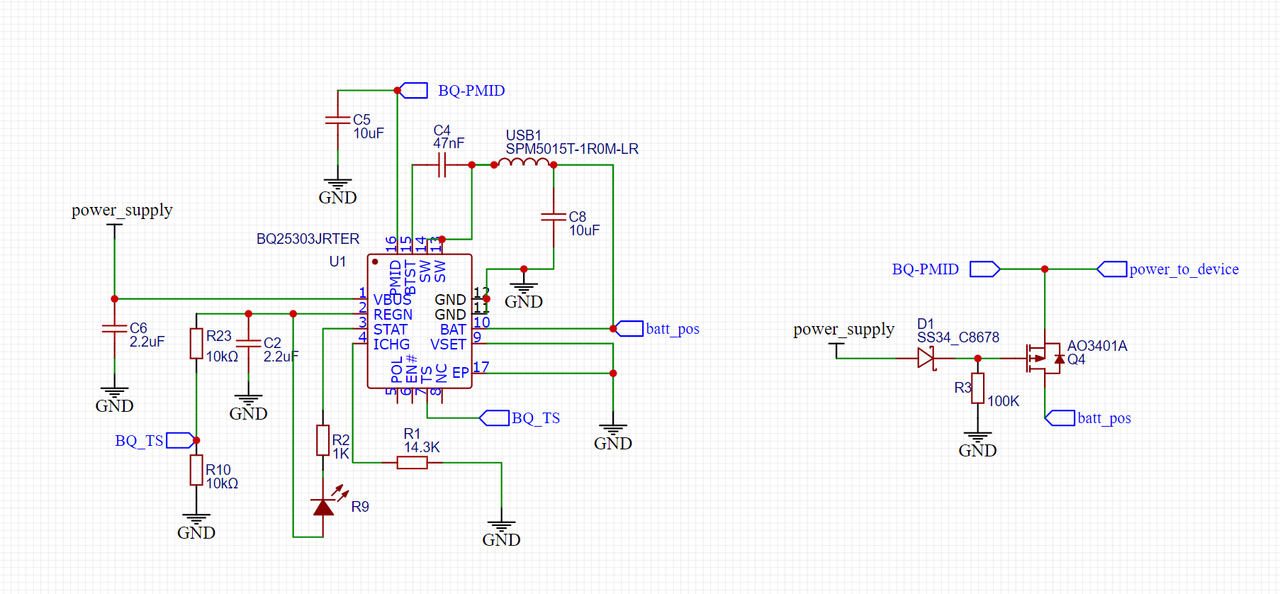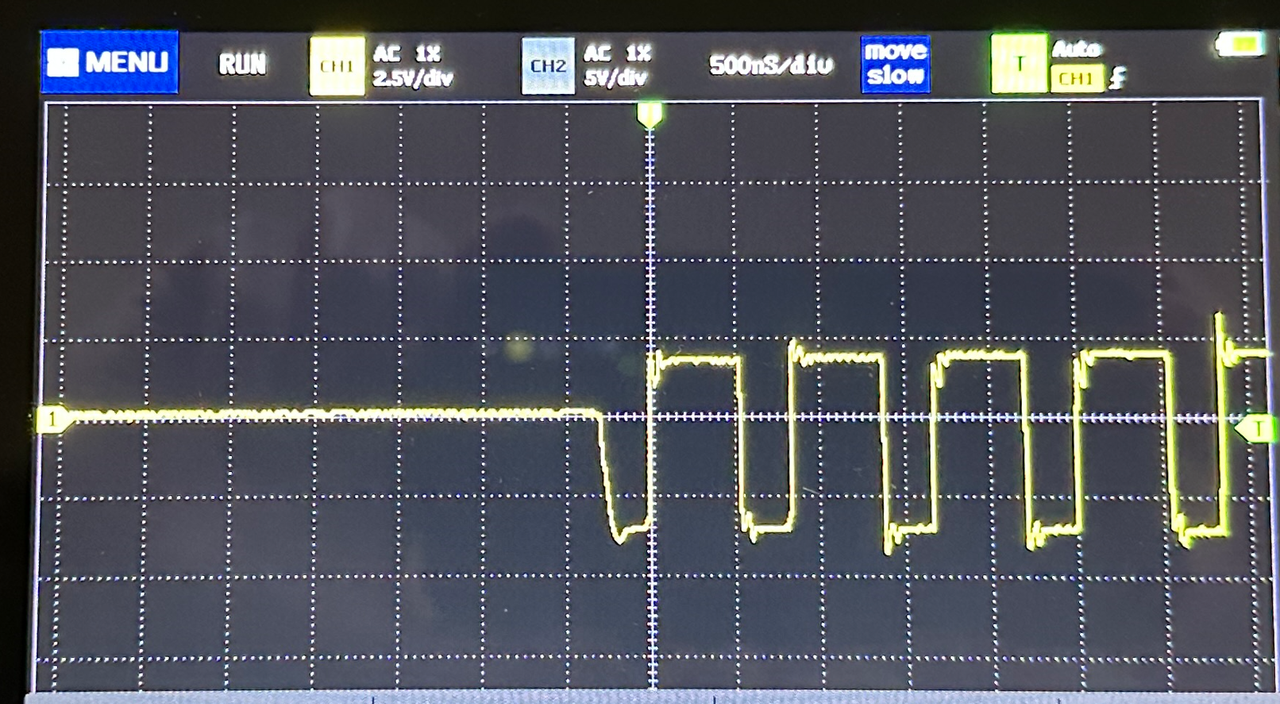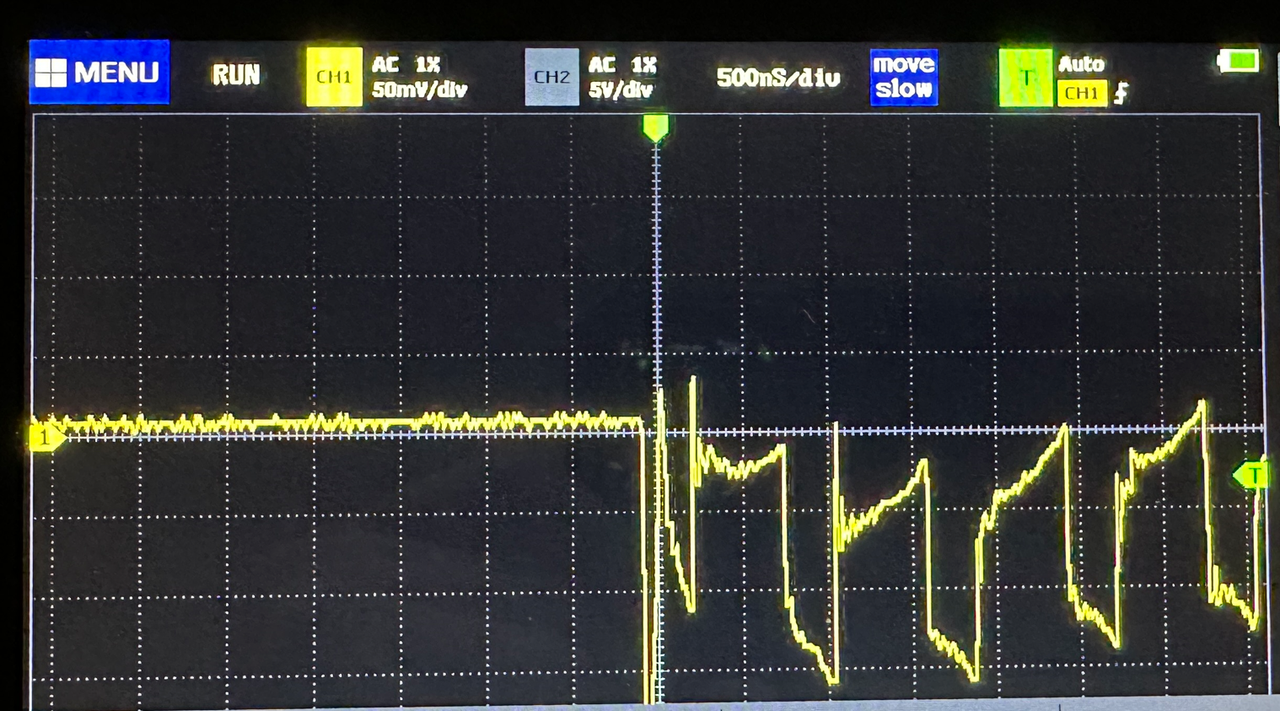Hi,
I have created a charging circuit using the BQ25303JRTER. The dataqsheet states the following at charge faults:
1. VBUS input overvoltage
2. TS cold/hot faults
3. Battery over voltage
4. IC thermal shutdown
5. Safety timer expiration with battery coltage below recharge threshold
6. ICHG pin open or short
This should lead to the blinking of a led (connected to the STAT pin) at 1 Hz with a duty cycle of 50%.
I found that some batteries in my circuit charge and some don't. To my knowledge there is no difference between these batteries (same model and age) and they function fine in another charging circuit using non-TI parts. Whenever a battery refuses to charge, the BQ25303 is blinking the led, but not at a 1 Hz rate. Instead, the blinking rate is much higher, I estimate it at 30 Hz maybe even more. I find no other description of blinking rates in the datasheet so I don't know what the IC is trying to communicate, if it is communicating anything at all.
What does the pulling down of the STAT pin at an estimated 30Hz with duty cycle of 50% mean?




